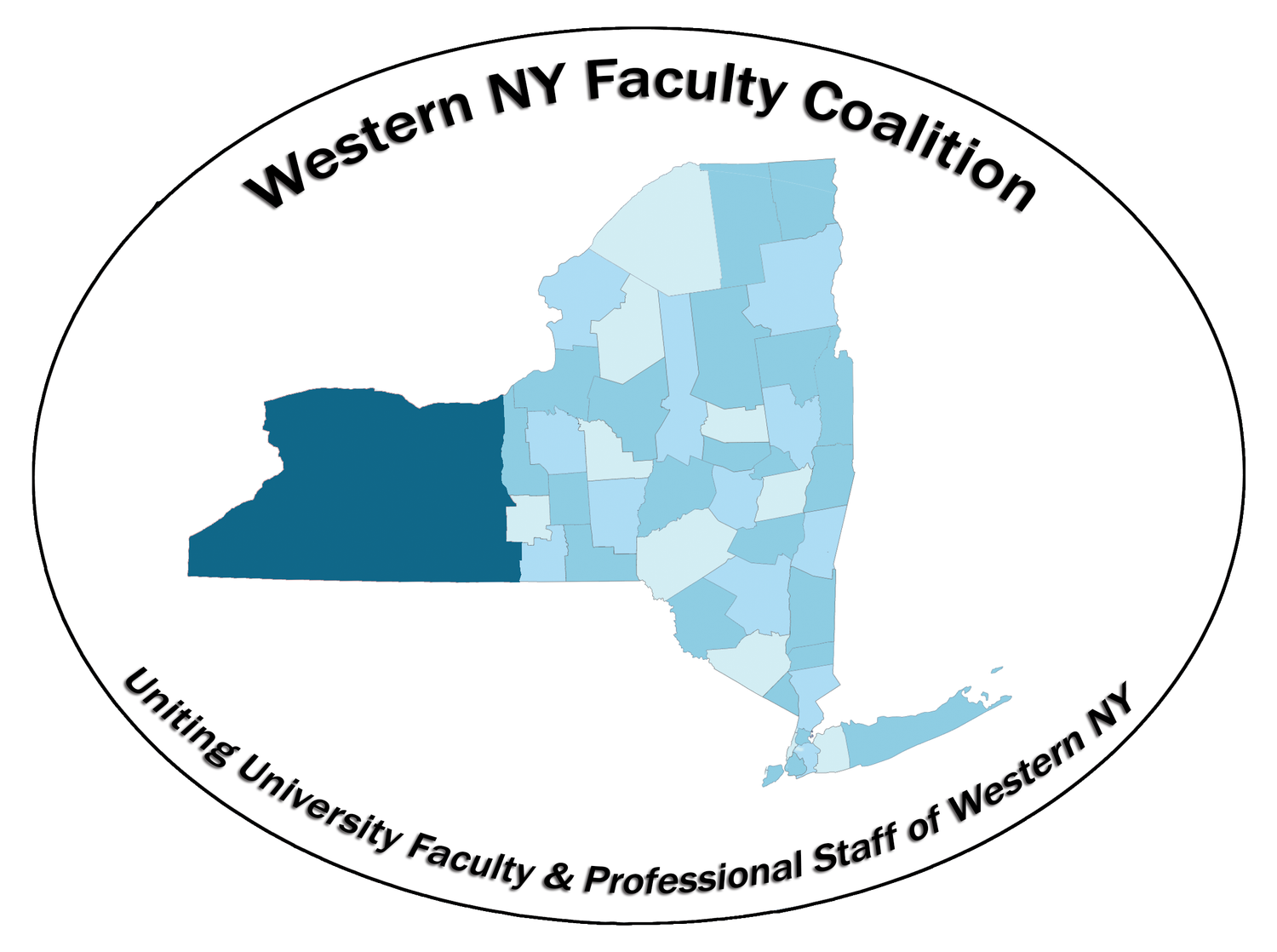Mission Statement
• The Covid-19 pandemic has exacerbated and accelerated challenges to colleges and universities in Western New York. As the second largest industry in the area, higher education must succeed in spite of these circumstances. Western New York higher education has a $3.2 billion economic impact on the WNY economy with $2 billion of direct institutional spending. This includes 32,000 full- and part-time jobs and over 20,000 degrees conferred annually with 7 in 100 residents being college students (WNY College Connection).
• It is self-evident that the success of higher education depends upon the faculty who develop the coursework, educate students, and serve as the engines of the intellectual life and academic excellence upon which these institutions depend. Rather than abandoning the principles upon which this success has been built, as we have seen both in Western New York and across the country, we must recommit to the principles of tenure and academic freedom.
• Faculty of the institutions of higher education in Western New York stand in solidarity in avowing the following:
1. That systems of tenure and promotion are essential for fostering academic excellence. Tenure provides the freedom to be creative and to explore the best means of educating our students, developing our research, and working with our local communities, including local employers, to solve problems and promote social justice and economic development. Tenure must be upheld and protected.
• Faculty of the institutions of higher education in Western New York stand in solidarity in avowing the following:
1. That systems of tenure and promotion are essential for fostering academic excellence. Tenure provides the freedom to be creative and to explore the best means of educating our students, developing our research, and working with our local communities, including local employers, to solve problems and promote social justice and economic development. Tenure must be upheld and protected.
2. The sustainment and consistent development of an academic enterprise – especially in times of uncertainty – requires a shared governance model of co-ownership of ideas, policies, and practices that engages all parties within the institution as stakeholders in its success. Faculty are essential to these practices—especially in developing and delivering a relevant and vibrant curriculum that engages our students and prepares them to be critical thinkers and productive citizens.
3. Faculty should be included in the decision that an institution faces a true financial exigency—“A severe financial crisis that fundamentally compromises the academic integrity of the institution as a whole and that cannot be alleviated by less drastic means” than the termination of tenured faculty appointment (American Association of University Professors “Recommended Institutional Regulations on Academic Freedom and Tenure”). In circumstances of financial exigency institutions of higher education should be explicit about shared governance processes and timelines, and operate with a transparency that allows all participating and affected employees to explore alternatives to the reduction or elimination of academic programs or involuntary termination of faculty positions.
4. As the creators and designers of course materials, we assert our ownership of these and over the intellectual property we are responsible for. The technologies needed to deliver academic content in virtual formats do not negate or limit these rights.
• We renounce any attempt to erode tenure, suspend agreed-upon processes of shared governance, and to encroach upon the principles and practices that have fostered and cultivated success in academia. We recognize that the erosion of these principles and practices on one campus threaten us all, and we stand in support of our colleagues and friends in demanding that higher education act according to the ethical and practical foundations that each institution purports to impart upon its students.
